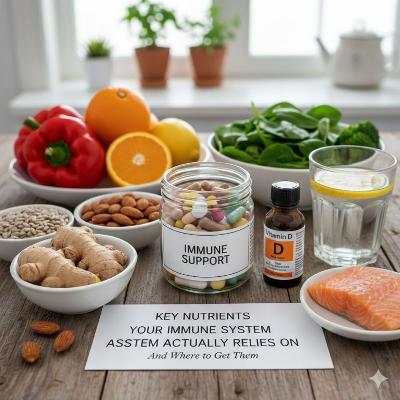You’ve always gotten out of breath after a marathon weekend of errands and household chores. But lately, your lungs just haven’t been keeping up with the demands of life. If you’re thinking that your breathlessness may be more than just a warning sign to exercise more, you’re not alone.
Many people develop difficulty breathing later in life for many reasons, so paying attention to your symptoms is important. Plus, some symptoms may be consistent with those of asthma, a lifelong condition where your airways narrow. While asthma can’t be cured, it can be managed, which makes your vigilance now essential for identifying treatment options.
1. Shortness of Breath
One of the most common signs of asthma is shortness of breath. While this is a normal occurrence after significant exertion, quick onset and frequent breathlessness are reasons for concern. Take note of your recent activities to determine a pattern of breathlessness, like exercise, high-intensity work, or household tasks.
Generally, repeated shortness of breath without reasonable physical effort should not occur for most people. If you’re easily out of breath more than you remember, consider speaking with an online doctor. In your initial consultation, you’ll be able to discuss your symptoms and concerns. If asthma is to blame, a treatment plan can be developed based on your needs and lifestyle.
2. Trouble Sleeping
When you’re experiencing sleep disturbances, everything else in life becomes more challenging. Coughing at night can signal that your airways are constricted, blocking the volume of oxygen your body requires. According to the Centers for Disease Control and Prevention, 16.5% of asthma sufferers don’t get adequate sleep. If you’ve already tried improving your sleep habits and surroundings, there may be underlying issues.
While you may not remember coughing during the night, persistent tiredness can be a key indicator that something is off. Take note of the frequency of waking up tired and ask household members if they’ve noticed couching or sleep changes. If you use a fitness watch, check your sleep log for movements outside your norm.
3. Wheezing Upon Exhale
Breathing should feel natural and effortless. Even though most people breathe shallowly, deeper breaths can be calming and correlate to health benefits. Some people diagnosed with asthma experience what’s known as a wheeze when they exhale. This symptom appears most often in children, but it’s not limited to this group. A wheeze is a high-pitched whistling sound, a departure from a healthy exhale.
While wheezing can indicate other breathing issues like an infection or allergies, it’s always a reason for concern. Take a video of yourself or whomever you’re monitoring for symptoms inhaling and exhaling, doing so for several breaths. Watch and listen to it to confirm your suspicion, and share your findings with your healthcare provider.
4. Pain in Your Chest
Chest pain can indicate a lot of things, ranging from heartburn to a heart attack. But the pain felt in your chest can also be your body’s response to asthma. When your airways narrow, oxygen is fighting its way to its final destination. This contraction can resonate as a pain felt at the breastbone.
Aim to first rule out other chest pain-related symptoms, as they may be life-threatening. Heart attacks are often accompanied by pain in the left arm or shoulder and lightheadedness for men. Women’s symptoms can be a little different, but they can include fatigue, back pain, and nausea. Heartburn, and the chest pain associated with it, can be worse when bending over or laying down. Review your symptoms in full and seek out the care you need as quickly as possible.
5. Coughing Attacks
More than just an annoying tickle, coughing attacks can almost take you out of daily activities. A persistent urge to cough that’s unable to be lessened with lozenges, warm beverages, or other aids is worth noticing. Sometimes, a coughing attack can be triggered by an illness or allergy. Other times, your environment and the odors surrounding you can be the culprit.
In the moment of a coughing attack, get to a safe place to sit down and try to catch your breath. It’s important to stay calm to ensure you can get oxygen in, even if you’re coughing uncontrollably. Alert others nearby if you need help beyond what you’re capable of while managing your coughing attack. In asthma sufferers, medication can help manage airway constriction, while fast-acting inhalers can provide relief from asthma attacks.
Know What to Look for and When to Get Help for Yourself or Others
Keeping an eye on symptoms isn’t limited to your own. Others close to you may begin exhibiting signs of asthma without making the connection. For children and older individuals, your awareness and understanding of the signs can be life-saving. While asthma can be managed, ignoring it can put the impacted individual in danger of an asthma attack. Elevate your concerns with confidence and advocate for others under your care.
If you’ve noticed asthma symptoms, keep track of them in a notebook or on your notes app. Sometimes, you’ll see a pattern that correlates with activities, environment, or irritants. Reach out to your health provider for a formal consultation and assessment. Once you’ve got answers, seek to understand your treatment plan and follow it as directed. When you manage your condition, you’ll be able to enjoy life knowing that you’re ready, even if asthma strikes.






